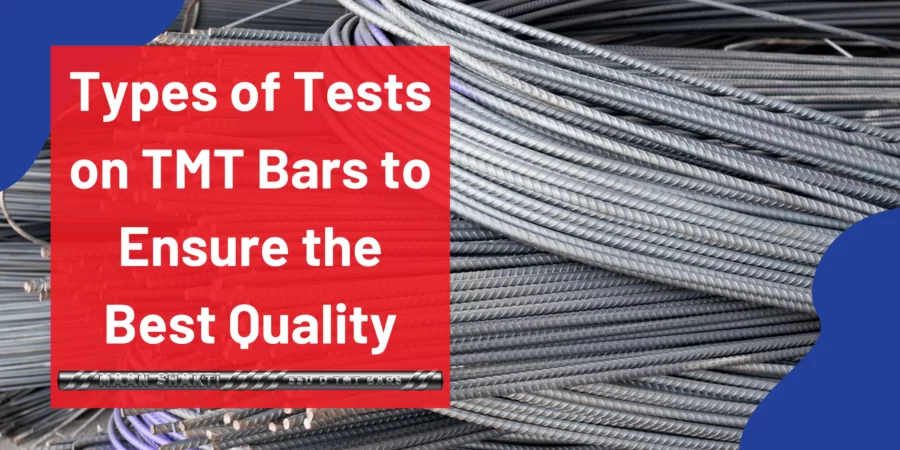You want your home to be built robust. Who wouldn’t? You have to choose quality raw materials and a robust architecture for that. Among raw materials, TMT bars are one of the most important ones that give your home the powerful and reliable structure you desire.
Many different brands of TMT bars claim to produce strong, reliable, and corrosion-resistant TMT bars. But how do they, or for that matter, you know that the TMT bars are of superior quality? The answer lies in the tests that the bars go through.
The best supplier of TMT bars ensures that every bar goes through rigorous tests to ensure they meet the quality standards set by the authority.
What are these tests? There are several tests to ensure the quality of TMT bars meets the set standards. Some of them include the tensile, yield, and bend/rebend tests, among others.
What are the Grades of TMT Bars?
When choosing TMT bars for construction, choosing the correct grade is essential. The grades denote the stress that must be applied to deform it. The higher the grade, the the stronger and superior the bar is. The different grades of TMT bars available in the Indian market are Fe-415, Fe-500, Fe-550, and Fe-600. Apart from these, there are also Fe-500D or Fe-550D, denoting higher ductile strength suitable for earthquake-prone areas.
Types of TMT Bar Testing
As mentioned, there are different types of tests performed on TMT bars to ensure their quality. The leading TMT bars manufacturers always follow these tests to maintain quality standards.
Tensile Testing
Tensile testing is a measure of the strength of TMT bars. To test the strength of the rebars for consistency, the Universal Testing Machine (UTM) is used. However, the UTM is used only when the diameter of the TMT bars is above 32mm. For diameters below that, UTM is not needed. Testing can be done without a UTM.
Yield Stress Testing
How do we measure the extent to which a rebar will continue to bend elastically? Elastic deformation is a type of deformation in which the deformed material comes back to its original shape as soon as the stress is removed. So, how do we determine how much force will be needed to deform a TMT bar plastically?
This measurement can be done using the Yield stress test. This test determines the stress up to which the bar will retain its shape under stress. The materials used play an important part in gauging the yield strength. Therefore, the materials are divided into two types based on their behavior. Steel and Aluminum are ductile materials, while glass and cast iron are classified as brittle materials. These two categories are distinguished using the stress-strain diagram.
Bend Test
The bend test consists of bending a test sample through 180 degrees by applying a load against a specified mandrel. Depending on the requirement of the standard of the material, such as 1786/2008, it must be parallel at a specified distance. This distance is controlled by an insert. This test is usually carried out at room temperature.
Re Bend Test
The rebend test is designed to determine the effect of strain aging on steel. Strain aging is an embrittlement effect that happens when nitrogen diffuses in the steel and forms cold deformation. When the temperature decreases, the risk of fracture increases. Because these steels have decreasing toughness at lower temperatures.
The rebend test comprises bending a test sample to 135 degrees by applying a load against a suitable mandrel. The test sample is aged by keeping it in boiling water (100 degrees C) and then allowed to cool. The sample is bent back to have an included angle of 157.5 degrees. This test is usually carried out at room temperature.
Chemical Analysis
The chemical test is performed using a spectrometer. The time required to perform the test is much less. It takes just a few seconds to get the results in a printed form of the 26 elements present in a TMT bar. Chemical Analysis is used to find the percentages of Phosphorus, Carbon, Copper, Manganese, Chromium, and Sulphur with the help of a spectrometer. This instrument gives a detailed qualitative and quantitative analysis of the TMT bar sample.
In Conclusion
The quality of TMT bars is gauged using different tests and procedures to ensure they meet the industry standards. This is essential to give your home the strong and reliable structure you desire. Choosing the best Supplier of TMT Bars like Maan Shakti TMT is the best way to ensure the quality of the bars.


Leave a Reply